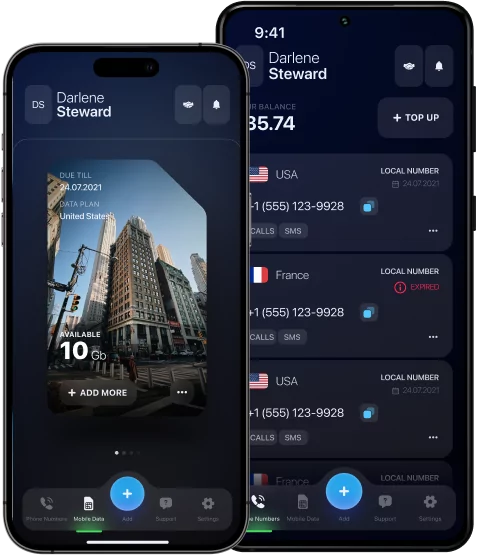Must Things to Do in Chicago for Everyone
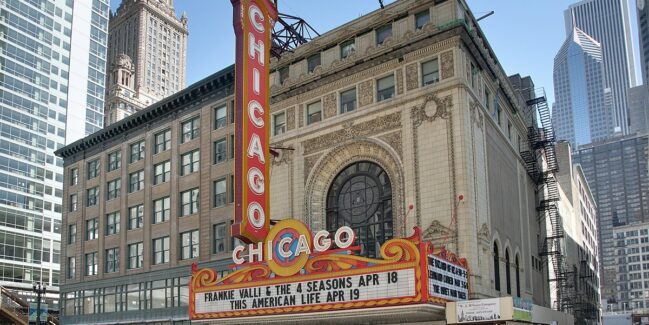
Do you want to have fun or have an interesting time in Chicago during your tour, enjoying the cultural and historical sights? Let’s look at the best things to do in Chicago and fall in love with this city.
Chicago is a popular city in the USA. It is located on the picturesque shore of Lake Michigan. The modern metropolis impresses its guests with numerous architectural, including Wrigley building, and natural attractions. The technical and aesthetic achievements of the best architects and artists from all over the world are concentrated here.
The city is famous for its luxurious landscaped parks, which are masterpieces of landscape art. Majestic and legendary skyscrapers amaze the eye with sparkling facades and original architectural solutions.
Learn the best things to do in Chicago for all visitors and how to stay in touch with the world using the best eSIM for Chicago during your American trip tours.
The Best Things to Do in Chicago: Top 20 Beautiful Places
People from all over the world live and work in Chicago, as in any major city. Here you can find national cafés, grocery stores, restaurants, and other businesses. Let’s look at the top 20 things to do in Chicago for different people worldwide.
1. Shedd Aquarium
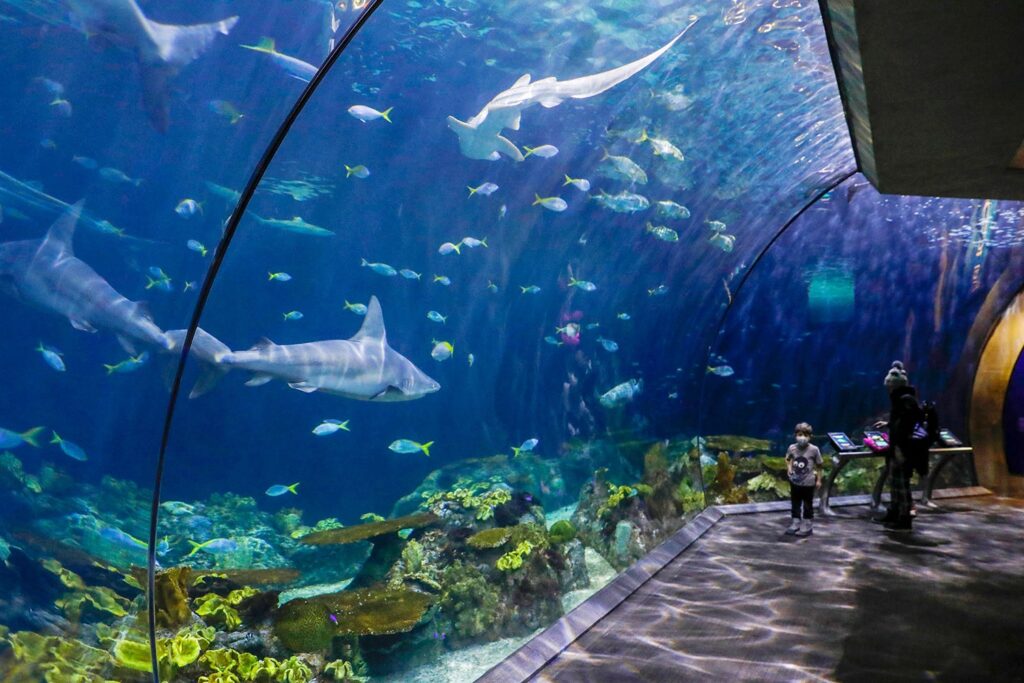
The neoclassical building with a columned portico and a grand staircase is located on the Museum Campus on the shores of Lake Michigan. Over the past decades, the Aquarium’s area has doubled. Some of the exhibits are located underground.
The collection contains 1,500 inhabitants of the depths of the sea and freshwater reservoirs — fish, shellfish, arthropods, amphibians, and mammals. Birds, anacondas, piranhas, and crocodiles live in pavilions. Sharks live in the Wild Reef exhibit with a model of a Philippine village, and large fish can be observed feeding in the Caribbean Reef Aquarium. This is one of the best things to do in Chicago.
2. Chicago Theatre
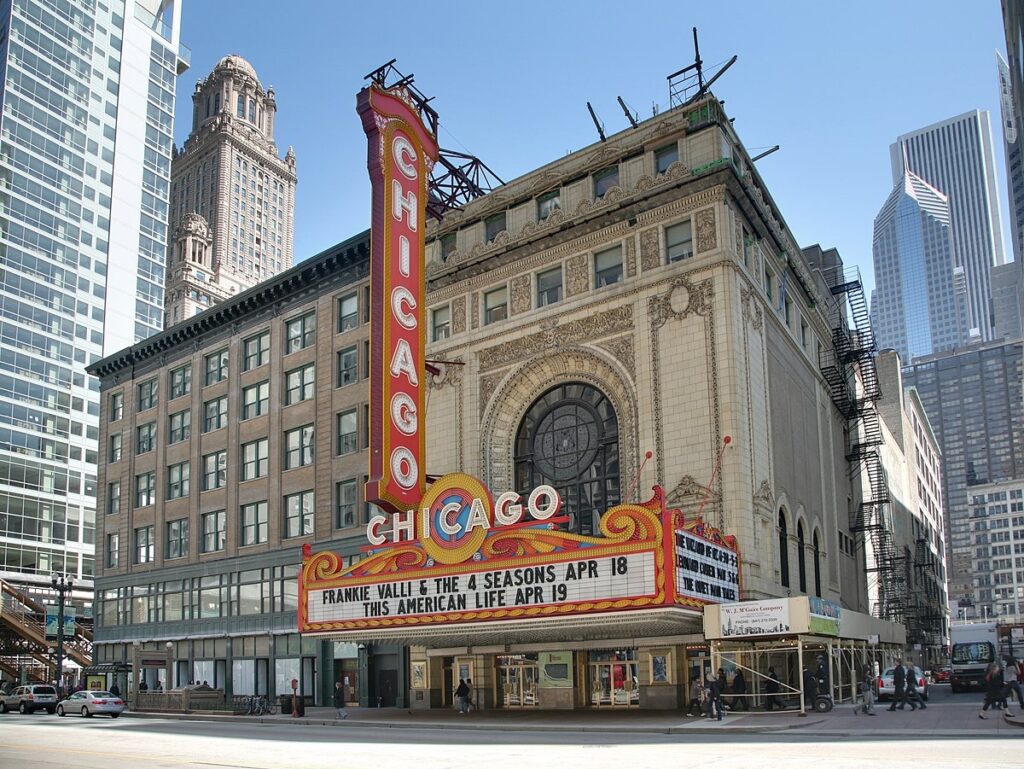
The Chicago Theater opened in 1921. The facade and interiors are decorated with Baroque luxury. The first forty years were the heyday of the Chicago Theater, the best artists and musicians performed on its stage, there was always a full house in the hall. In 1986, the building was restored, and the theater was revived along with it. Today, performances, variety shows, festivals, and classical music concerts are once again taking place on the best stage in Chicago.
3. Lincoln Park
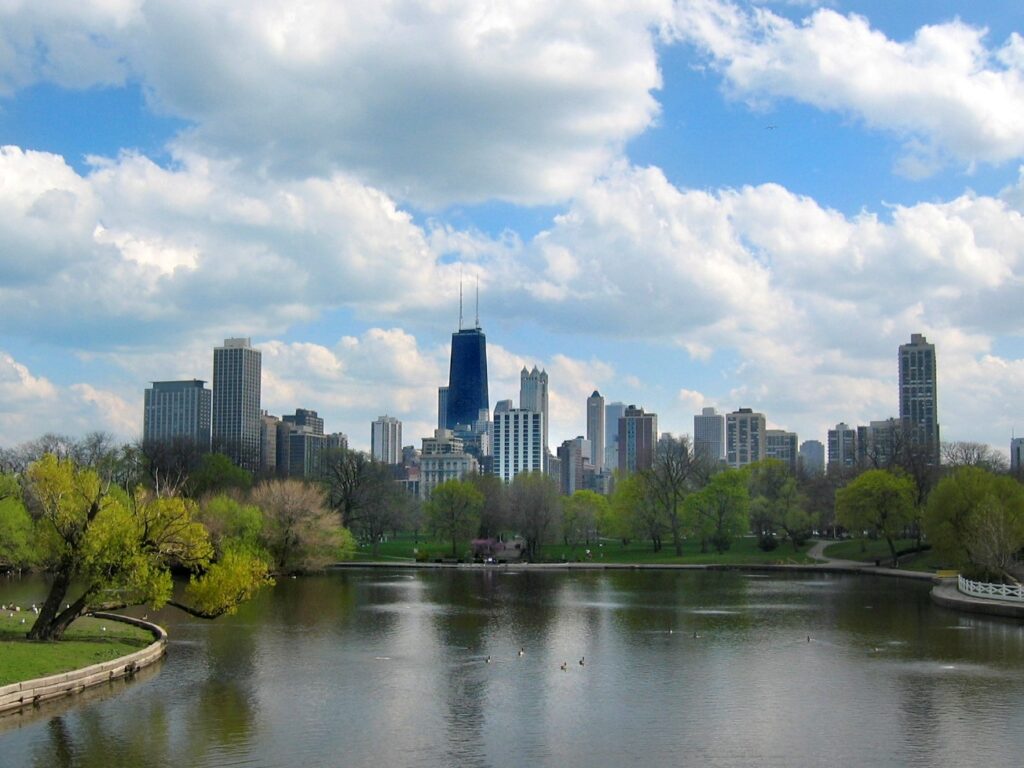
There is a huge public park named after Abraham Lincoln on the shores of Lake Michigan. It was laid out in 1860 on the site of a former cemetery, and in just a few years the gloomy place turned into a flourishing recreation area. After the death of the president, the park was given his name. For a century and a half, Lincoln Park was expanded, landscaped, and decorated. Today, 488 hectares contain ponds, beaches, a large sports location, the famous Chicago Zoo, a Nature Museum, a Historical Museum, monuments, and attractions. Colorful carnivals, concerts, and theatrical productions take place here.
4. Bahai House of Worship
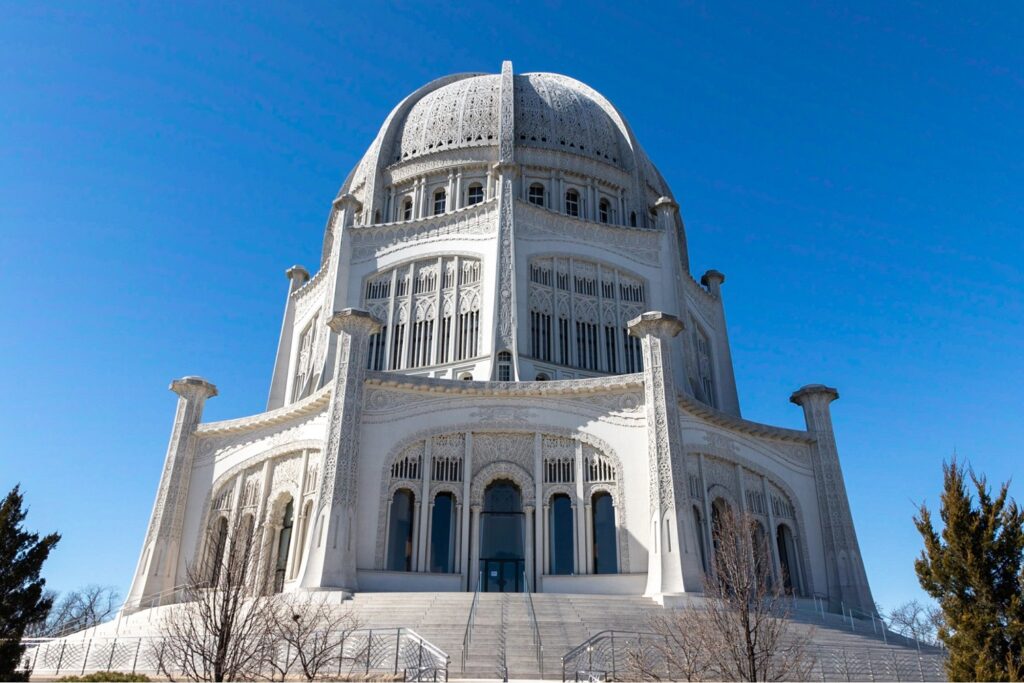
In the northern Chicago suburb of Wilmette, a magnificent Bahai Temple stands on the shores of Lake Michigan, built-in 1953. Its beauty is second only to the Lotus Temple in India. The airy white stone building filled with light is completely covered with patterns in which the symbols of all religions of the world are encoded. The number 9, sacred to the Bahai, is reflected in the architecture of the temple — the building has nine faces, and nine entrances, and is surrounded by nine gardens. Inside, an openwork dome hovers over the spacious hall, in the center of which is an inscription in Arabic script.
5. Grant Park
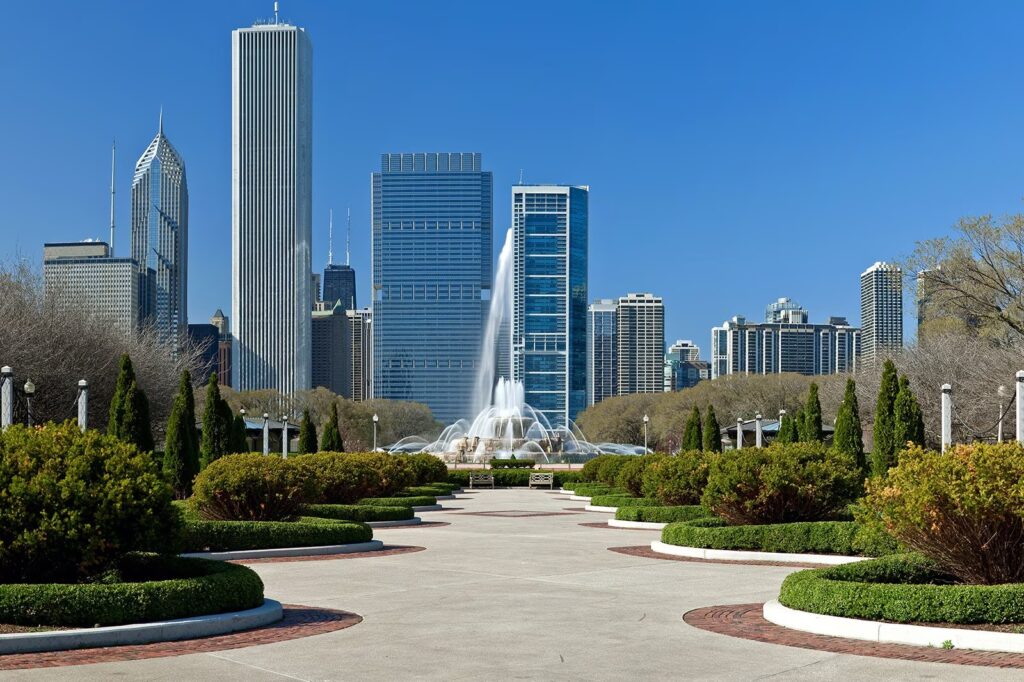
Grant Park is located on the shores of Lake Michigan and is adjacent to the Chicago Loop business center. The empty space was turned into a public recreation area in the middle of the XIX century. In the last century, Grant Park began to host important city events, festivals, music, and culinary festivals. In 2004, the territory was expanded by converting the former industrial zone into a modern Millennium Park. Grant Park is home to the Art Institute, art galleries, the interactive Crown Fountain, the Cloud Gate sculpture, gardens, and open spaces for concerts and festivals.
Read also:
6. Lake Michigan
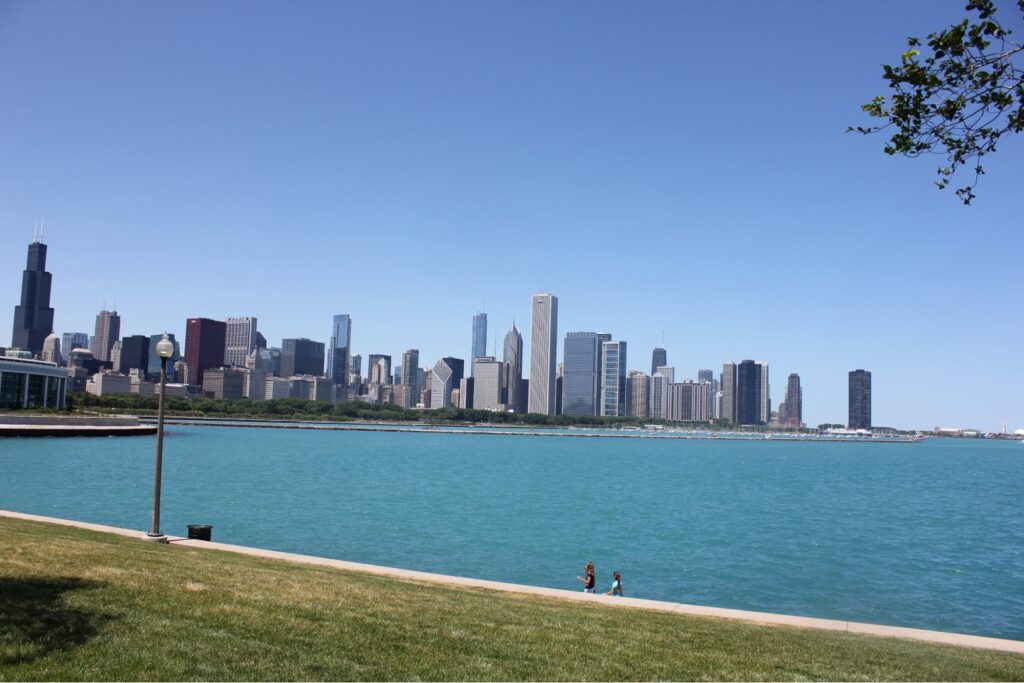
Lake Michigan, on the shore of which Chicago is located, is the third largest among the Great Lakes and the only one that lies entirely on the territory of the United States. In winter, the lake is frozen, so navigation is possible only in the warmer months. Today, the recreational area includes tens of kilometers of beautiful sandy beaches, natural parks, and resort towns. Fishing is a special pastime in Michigan. Carp, trout, walleye, whitefish, perch, and other noble fish are caught here. Well-maintained beaches offer vacationers a lot of activities: water sports and volleyball courts. Hiking along the shores of the lake, and riding on coastal dunes on quad bikes are popular.
7. Millennium Park

Millennium Park’s cultural venues include the Boeing Gallery’s open exhibition spaces with works of contemporary art, the Pritzker Pavilion Concert Hall, and the Harris Music and Dance Theater. Tribune Plaza & Ice Rink and Park Grill are an area where a large outdoor restaurant is open in summer and a free public ice rink is filled in winter.
The main attraction of the Millennium Park is the sculpture Cloud Gate on the AT&T Plaza, shaped like a bean. The huge rounded surface consists of polished metal plates, in which clouds, passers-by, and high-rise buildings standing nearby are reflected as in a mirror.
8. Chicago Riverwalk
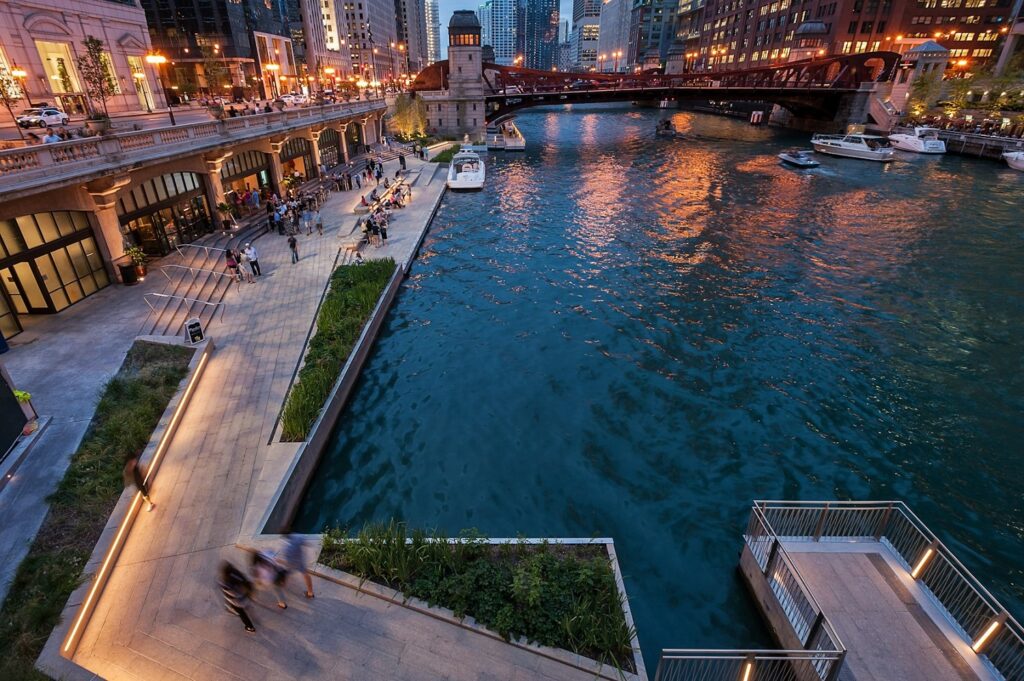
Construction of the Riverwalk began in 2001 as part of the renovation of Wacker Drive. The boardwalk stretches through downtown along the south bank of the Chicago River from Lake Michigan to Lake Street. The 3.62 km long coastal area has turned into a popular place of recreation and entertainment with shops, bars, restaurants, squares, art objects, and playgrounds. Following the bends of the river, the embankment is constantly changing its appearance. From a walking path, it turns into a multi-tiered amphitheater, descends to the water itself, and rises above it with observation decks.
Several berths have been built on the Chicago River embankment, where a river excursion tram, and a water taxi stop.
9. Maggie Daley Park
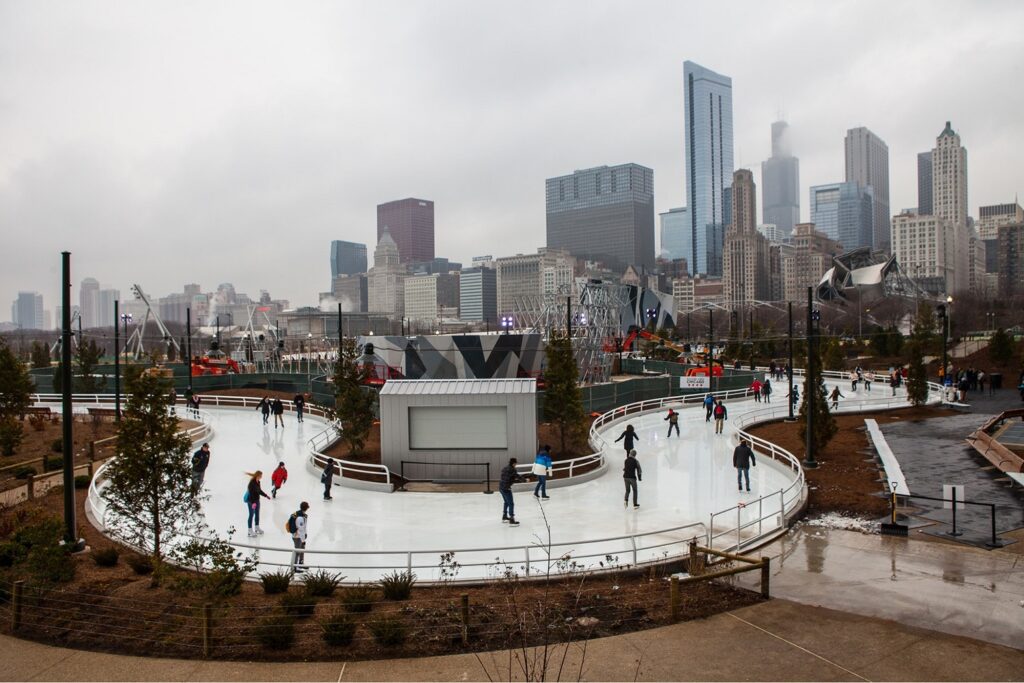
Maggie Daley Park appeared in 2014 as a result of the reconstruction of the old recreation area. It bears the name of the former first lady of Chicago, who died of cancer in 2011. Today, Maggie Daley Park has turned into one of the best entertainment venues with a mini golf course, a climbing wall, a play garden with six playgrounds, a picnic area, shady alleys, and open lawns.
In the northeastern part of the park is the Cancer Survivors Garden, one of 24 parks built nationwide by the Richard and Annette Bloch Cancer Foundation. The pavilions of the garden are dedicated to the three stages on the road to recovery — acceptance, support, and celebration.
10. Garfield Park Conservatory

Under the glass and floral stained-glass windows of the fenced greenhouse of Garfield Park, there were luxurious tropical gardens, bright flowers, palm alleys, plant compositions, a lecture hall, and a space for master classes. The greenhouse was built in 1907, and famous architects, engineers, designers, and sculptors had a hand in creating the Garden of Eden. It consists of eight halls where different natural landscapes are presented. The collection includes 600 species of plants, including 84 species of palm trees. The arrangement of the composition is constantly changing, a colorful exhibition of orchids takes place in front of the greenhouse.
Choose the best way of communication during your American trip and use eSIM for Chicago USA!
11. Museum Campus
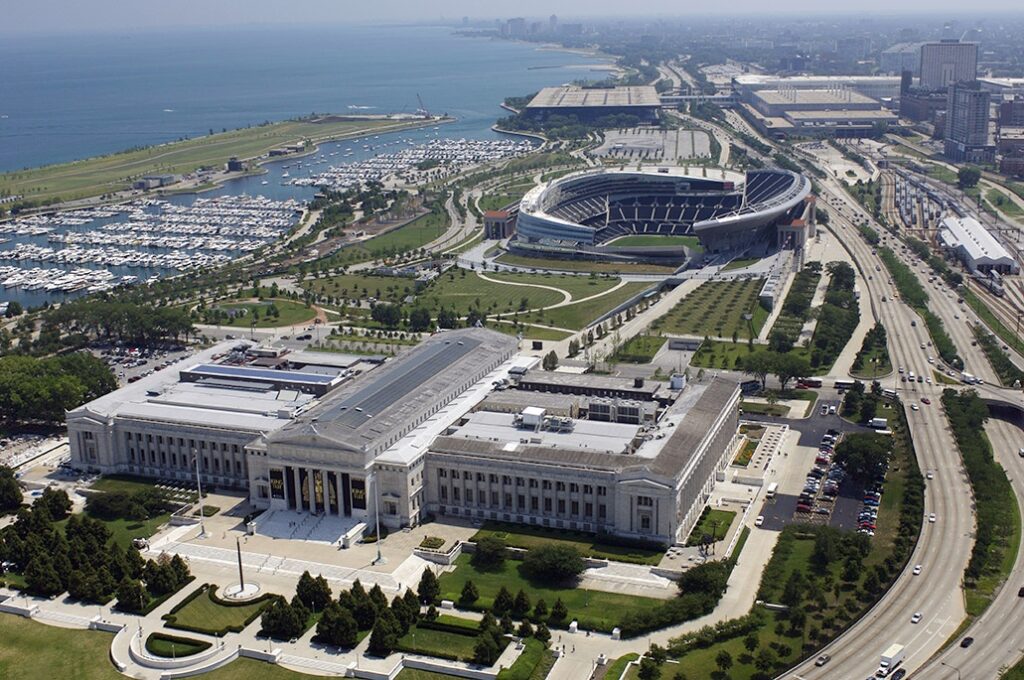
The Chicago Museum Campus is a park on the shores of Lake Michigan, where the three largest natural science expositions of the city are located — the Shedd Aquarium, the Adler Planetarium, and the Field Museum of Natural History. The official opening of the campus took place in 1998. As a result of the reconstruction of the space, three buildings built at different times were united by a joint infrastructure, which made access to museums more convenient. The Museum of Natural History was the first to appear in 1921. In 1930, an Aquarium and a Planetarium were opened.
12. Hyde Park
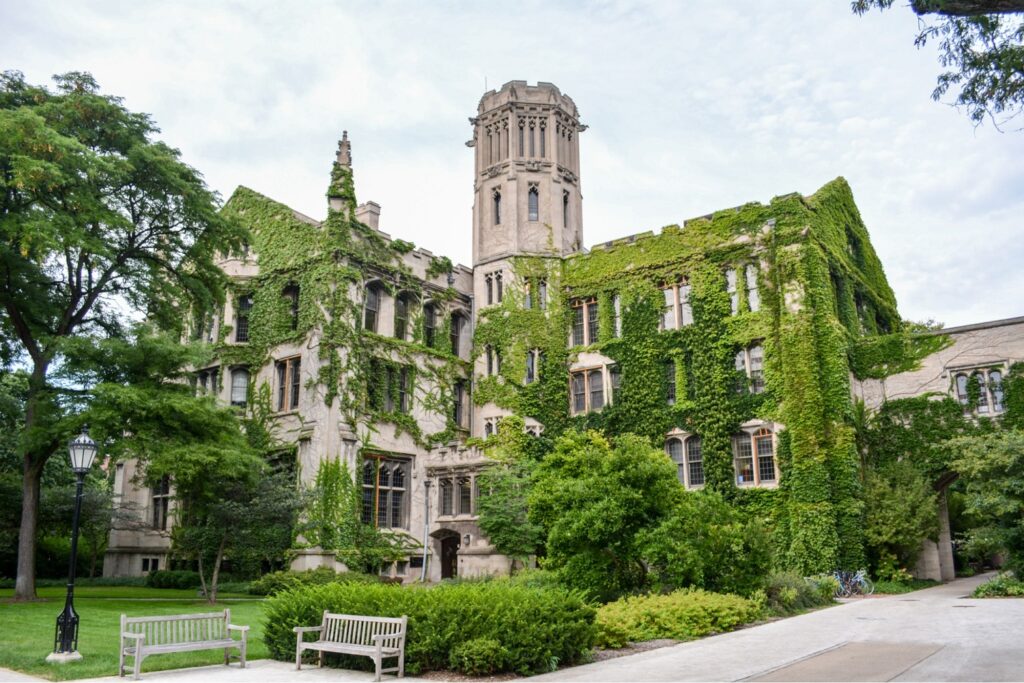
Hyde Park is a neighborhood in the south of Chicago, formed in the middle of the XIX century. It is full of historical and architectural attractions. This is a place for pleasant walks, beach holidays, culinary delights, and educational excursions.
In summer, the sandy beach on 57th Street becomes the point of attraction. It stretches from the Naval Pier to the South Shore Cultural Center. Promontory Point, an artificial peninsula with a beautiful view of the central areas of Chicago, attracts you to relax in nature.
13. The Skydeck
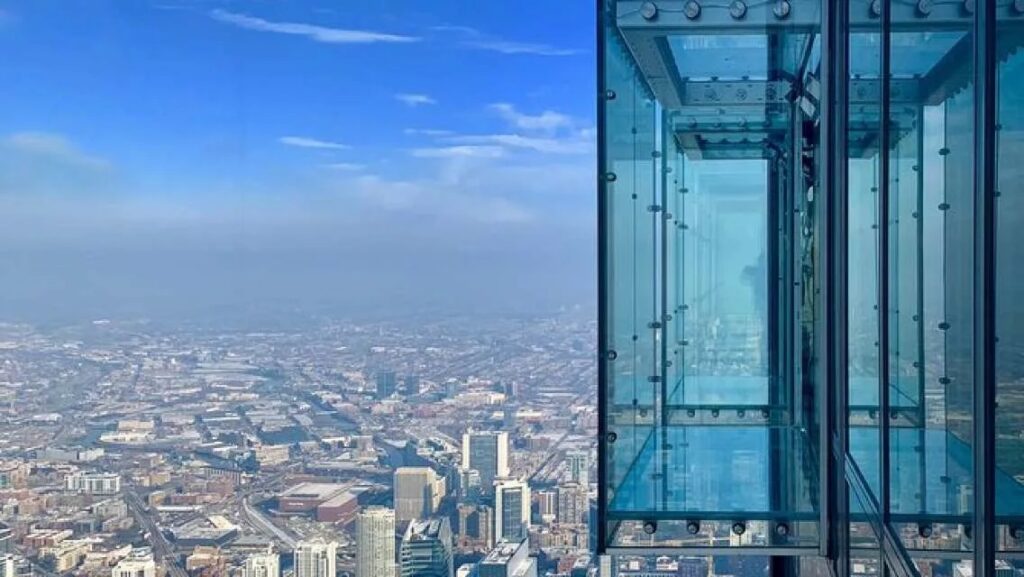
The Skydeck is located at 412 m in the famous Willis Tower. It occupies an entire floor with panoramic windows and a 360° view. The Skydeck is equipped with four glass sliding cabins that can accommodate up to five people at a time. The vast Chicago stretches underfoot, and in clear weather, the neighboring states of Wisconsin, Indiana, and Michigan are visible in the distance. The site is open around the clock 365 days a year. This is one of the best things to do in Chicago.
14. Museum of Contemporary Art
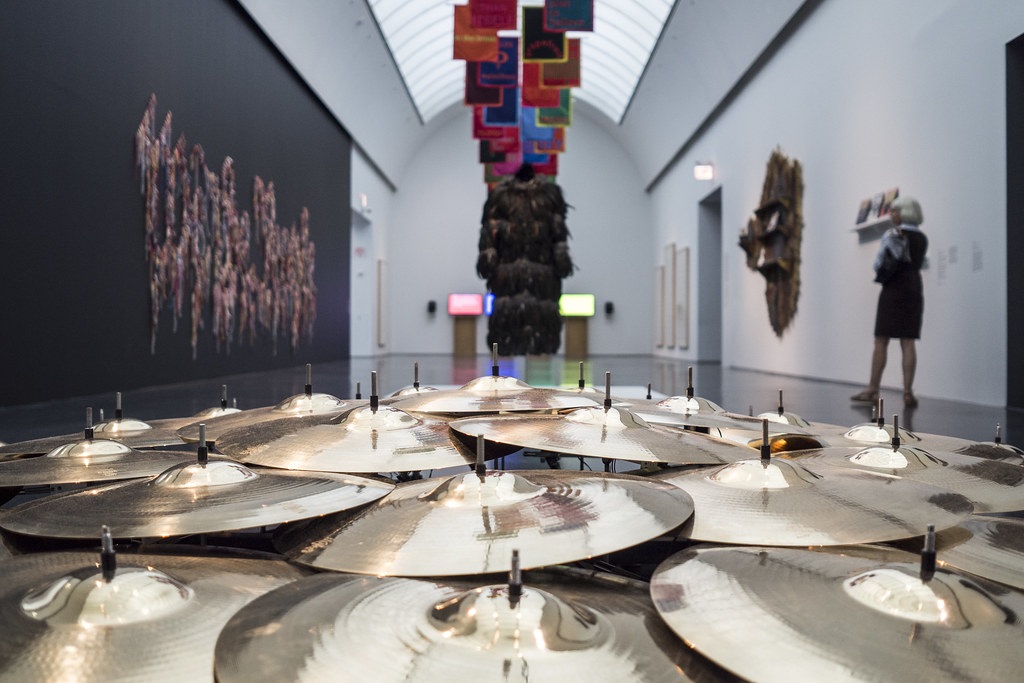
One of the world’s largest museums of avant-garde and postmodernism is located in Chicago. The gloomy building conceals a riot of colors, incredible shapes, and light-filled halls behind the tinted mirrored facade. Its interior can rightfully be called one of the main exhibits of the Museum of Modern Art. The collection includes paintings, sculptures, photographs, and installations. Stylistic trends — pop art, surrealism, minimalism, and conceptual art.
15. Chicago Water Tower

On Michigan Avenue, in the center of the Magnificent Mile, stands one of the oldest water towers in the United States, which miraculously survived the Great Chicago Fire of 1871. It was built in 1869 to supply the city with clean water from Lake Michigan. The building, built of yellow limestone blocks, is richly decorated with small Gothic towers. A large tower rises above it, inside which there used to be a pressure equalization pipe. It houses an art gallery with works by American artists and photographers.
16. Navy Pier
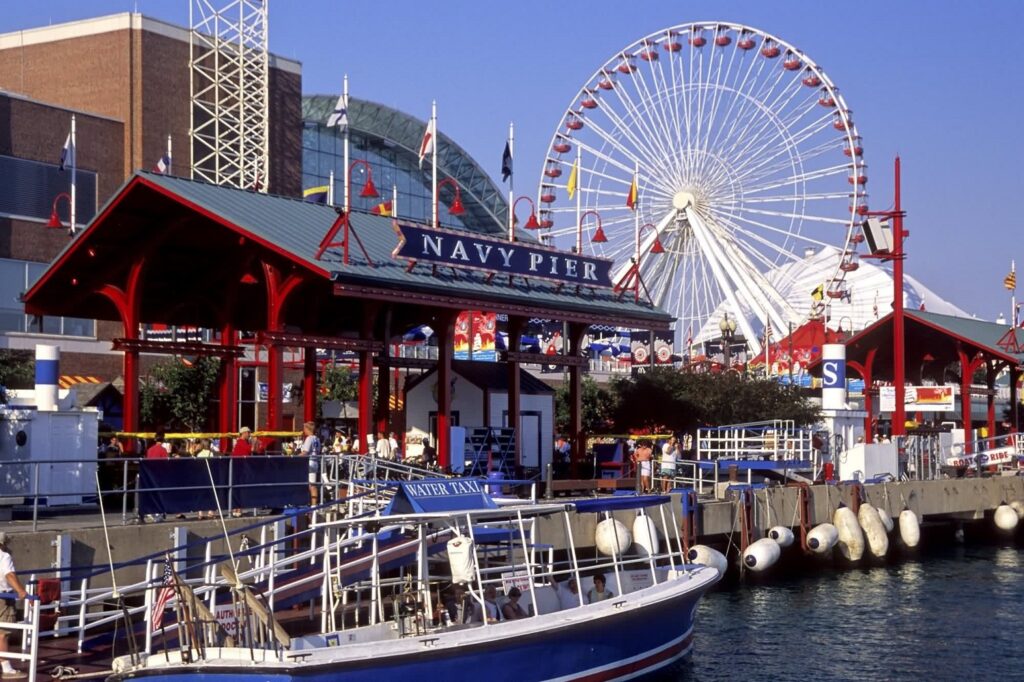
At various times, the Naval Pier was a harbor with warehouses, a training base for the U.S. Navy, a fairground, and a walking area. Today it is a large entertainment center with restaurants, air and water attractions, art exhibitions, and its own attractions. Sightseeing boats depart from the piers of the pier, the walk includes breakfasts, lunches, and dinners. You can rent a yacht for a friendly party. Guests of the park are offered to go up in a hot air balloon, have fun in the fun room, play “Sea Battle” on remote-controlled boats, and go with children to the developing Chicago Children’s Museum.
17. Chicago Children’s Museum
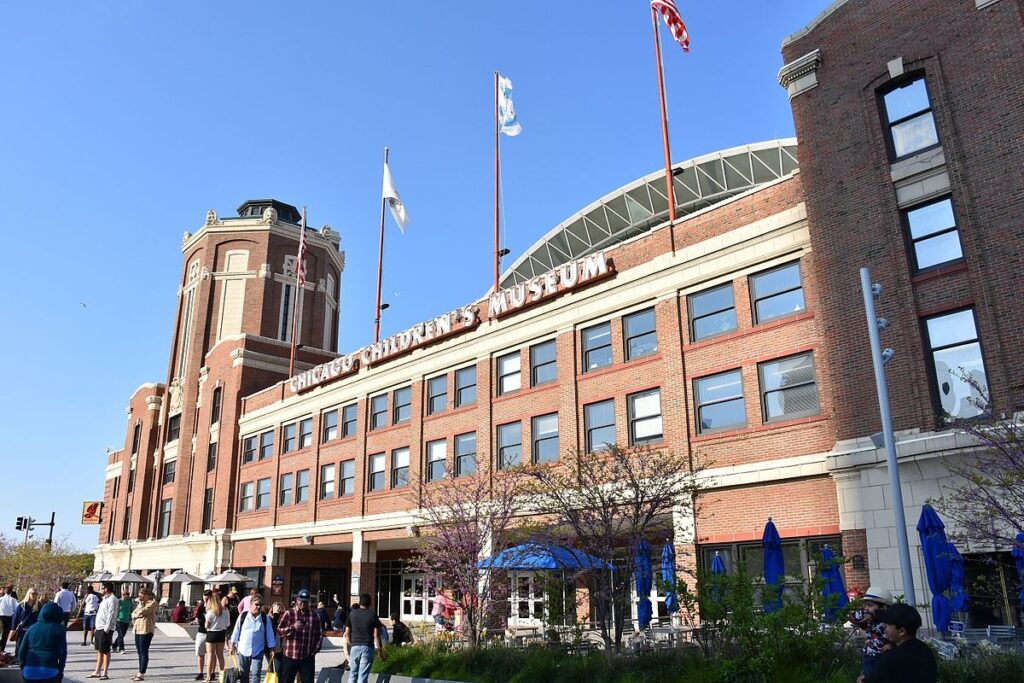
The Chicago Children’s Museum, founded in 1982, was the Youth League’s response to the reduction of the program in public schools. By 1995, it had transformed from a small exhibition in the public library into a full-fledged museum and occupied a large building on the Navy Pier. The halls do not have the usual wine exhibitions, they are more like a play area where children get to know the world around them, and the history of the city and the country in an accessible way. The museum has several zones — a children’s playground, a fire station, a water playground, an art studio, a laboratory for experiments, and a family climbing schooner with rope climbers.
18. Field Museum of Natural History
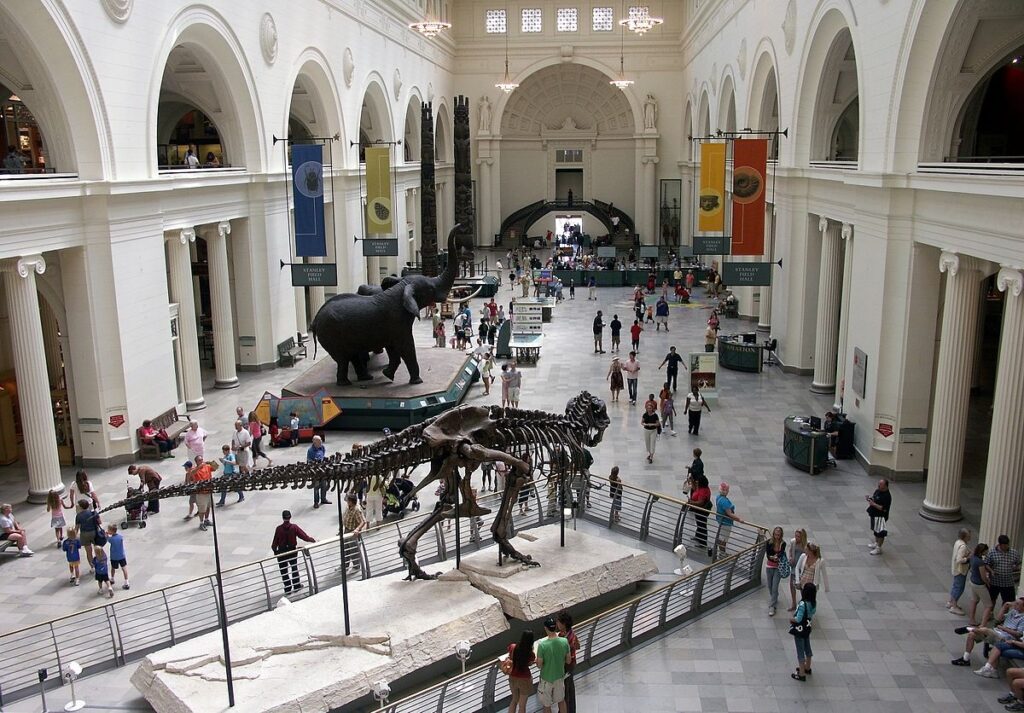
The Field Museum of Natural History, founded in 1893, is part of the Chicago Museum Campus, located on the shores of Lake Michigan. The impressive collection includes 20 million exhibits — paleontological finds, ancient artifacts, minerals, fossils, precious stones, and fragments of meteorites found in different parts of the world.
The museum consists of three departments: anthropological, geological, and zoological. The offer to spend the night in the museum surrounded by skeletons and frozen prehistoric animals on the catwalks is very popular. Places for overnight stays are booked several months in advance.
19. Buckingham Fountain
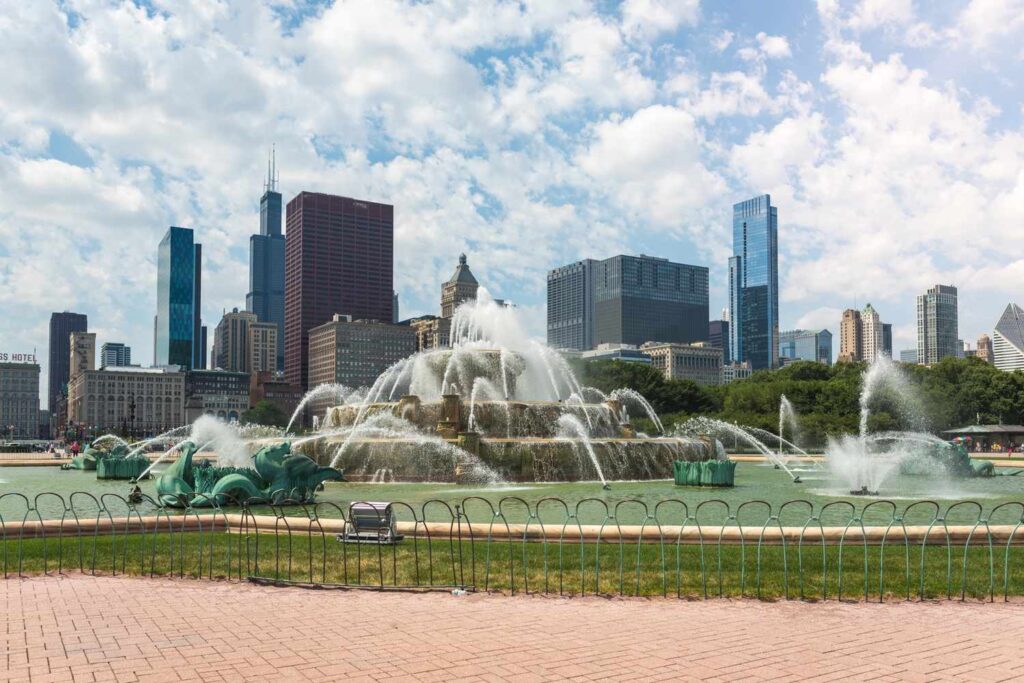
The luxurious Rococo fountain was created by the French sculptor Marcel Layu. In the center of the pool with a diameter of 84 m stands a three-tiered pink marble structure resembling a wedding cake. According to the author of the project, the fountain symbolizes Lake Michigan, four sculptures around it represent the states located on the shores of the lake. The fountain emits 134 jets, and the central one in the upper bowl soars to a height of 46 m. The jets illuminate 840 lanterns.
20. Magnificent Mile
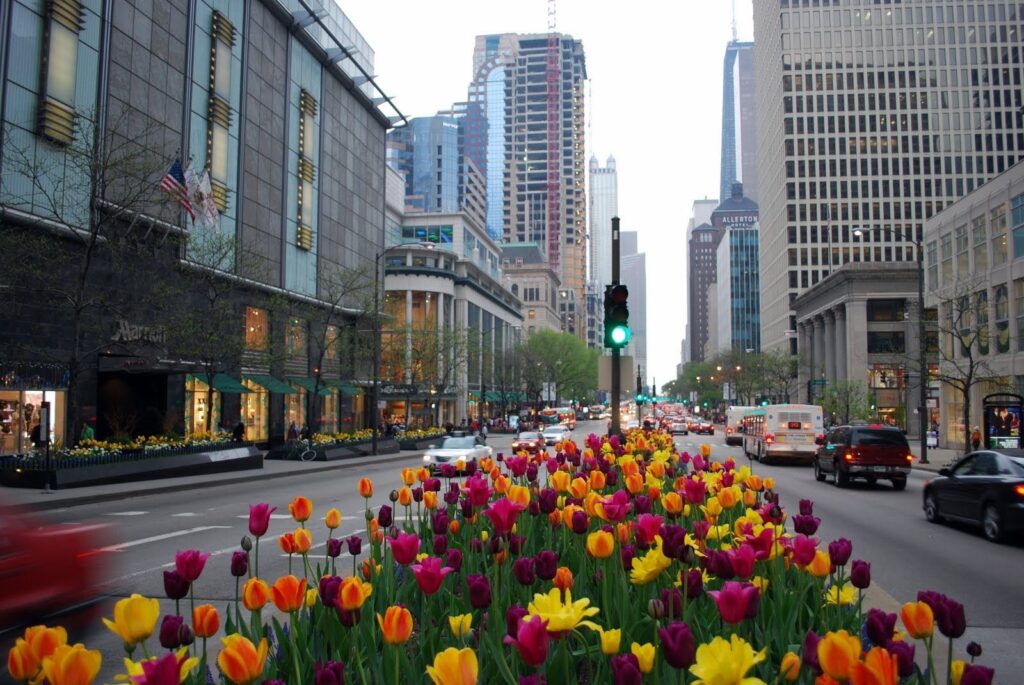
The Magnificent Mile is 13 blocks of expensive shops, hotels, restaurants, a mix of architectural styles from different eras, and the center of Chicago’s historical monuments. It starts at the Chicago River and ends at Oak Street. The current Fourth Presbyterian Church dates back to the beginning of the last century. In addition to worship services, it hosts free concerts. The landmark and recognizable symbol of the area is the conical black tower of the John Hancock Center.
Is Chicago safe to travel?
Chicago, like any big city, has its own safe and less safe neighborhoods. In general, many tourists visit Chicago without problems and enjoy its attractions such as Millennium Park, the Museum of Science and Industry, as well as the Lake Michigan waterfront. If you follow simple precautions, your stay in Chicago should be safe and enjoyable.
What can you do in Chicago in one day?
In one day in Chicago, you can:
- Visit Millennium Park and take a picture with the “Cloud Gate”.
- Take a walk or a cruise along the Lake Michigan waterfront.
- Take a look at the Art Institute of Chicago.
- Climb to the observation deck of the Willis Tower for a panorama of the city. Don’t forget to buy tickets.
- Walk along the streets of Michigan Avenue and do some shopping.
How to Stay Connected During Your Chicago Trip?
When traveling, the main thing is not only to plan a route but also to take care of communication during the trip. The best way to stay connected is to use eSIM, a SIM card built into your smartphone that you need to activate and use anywhere in the world to choose from.
To activate, you need an eSIM provider, for example, eSIM Plus, which will help you do everything online in a few minutes without wasting time on trips to mobile operators. At the same time, there are many tariff plans to choose from for any purpose and budget.
Plan your trip correctly, and use only the best eSIM Plus!





